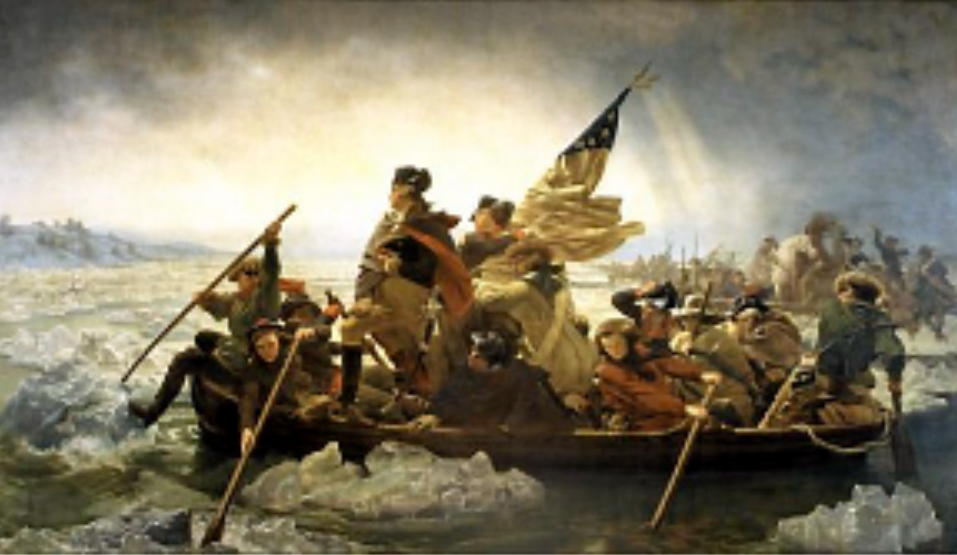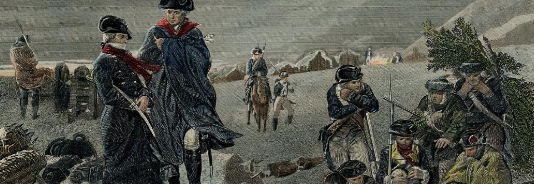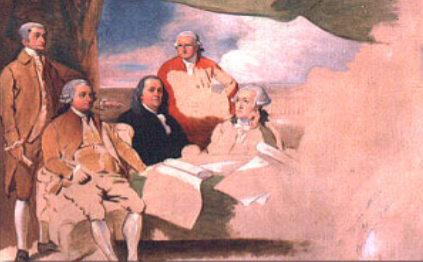The American Revolution Quiz 3/28
1/66
Earn XP
Description and Tags
study
Name | Mastery | Learn | Test | Matching | Spaced |
|---|
No study sessions yet.
67 Terms
Blazed
cut a trail (as in “he was a trailblazer”)
Draft
a mandatory call of duty to serve in an army
Guerilla Warfare
system of warfare in which he soldiers fight using techniques such as surprise, ambush, and disruption
Loyalists/Tories
those who remained loyal to Britain
Molly Pitchers
women who brought pitchers of water to the soldiers at the Battle of Monmouth
Patriots
Colonist who supported independence
Privateer
a privately owned ship commissioned by the government to fight the enemy in exchange, the ship could keep whatever they found on enemy ships
Philis Wheatley
A Black woman poet who wrote poetry in support of the Patriot cause and corresponded with Washington, Franklin, John Adams, and John Hancock during the war (AMERICAN)
Marquis de Lafayette
A French noble who supported the Patriot cause and fought with Washington as a high-ranking officer (AMERICAN)
Nathaniel Greene
A general and top strategist who was placed in command of the Southern division of the Continental Army by Washington (AMERICAN)
Henry Clinton
A general who fought at the battles of Bunker Hill and Long Island who later became the commander in chief of the British army and won the Battle of Charleston in 1780 when he captured 4,500 American soldiers (BRITISH)
Charles Cornwallis
A general who ultimately surrendered the British army at the Battle of Yorktown, Virginia in 1781, leading to the end of the war (BRITISH)
John Burgoyne
A general who was stationed in Canada and was ordered to move his army south towards Albany, New York in 1777 and eventually surrendered the British forces at the Battle of Saratoga (BRITISH)
William Howe
A general who was the Commander in Chief of the British Army from 1776 to 1778 and won the Battles of Long Island, Brandywine, and Philadelphi and later resigned after he failed to backup the British troops at the Battle of Saratoga (BRITISH)
Horatio Gates
A general who was the commander of the American troops at the Battle of Saratoga and who was later replaced as the commander of the Southern division of the Continental Army by General Nathanael Greene (AMERICAN)
First Rhode Island Regiment
A group of 130 Black soldiers that is considered to be the first Black military unit in American history (AMERICAN)
Francis Marion
A leader of the American militia who was given the nickname “Swamp Fox” by the British because he was so fast that they could not catch him or deal with his “hit- and-run” tactics (AMERICAN)
Oliver Cromwell
A member of the New Jersey militia who served in the battles of Trenton, Princeton, Brandywine, Monmouth, and Yorktown and was awarded the Badge of Merit for his service before being personally discharged by Washington (AMERICAN)
Sybil Luddington
A teenage girl from New York who was called the “Female Paul Revere” after riding through the countryside upstate to warn the colonists about the approaching British Army (AMERICAN)
Deborah Sampson
A woman who assumed the identity of her dead brother in order to English in the 4 the Massachusetts Regiment who was injured in battle and given an honorable discharge by Henry Knox after the war (AMERICAN)
Richard Howe
Commander of the British navy during the war who headquartered his fleet at NYC Harbor at the start of the war (BRITISH)
Colonel Tye
Fought for the British as a Black Loyalist and the commander of the Black Brigade in New Jersey and captured the rebel leader Josiah Huddy at Colts Neck, New Jersey (BRITISH)
Jean Baptist de Rochambeau
French general who the French King Louix XIV placed in charge of the 6,000 French troops sent to fight in the colonies during the war (AMERICAN)
Hessians
German mercenary soldiers who were hired by King George (BRITISH)
Baron Friedrick von Steuben
German military commander who helped Washington train the American troops at the winter camp of Valley Forge in 1778 (AMERICAN)
Benedict Arnold
Part of Washington’s inner circle who was the hero of the Battle of Saratoga in 1777 but betrayed the Americans by sharing plans to invade Canada with the British and then attacking his home state
Lydia Barrington Darragh
Participated in the Americans’ “Button Code” spy operations of the war in General Howe’s Philadelphia headquarters (AMERICAN)
James Armistead Lafayette
Served as a double-agent spy during the war and was emancipated from slavery because of his heroism during the war (AMERICAN)
Margaret Cobin
Served as a temporary replacement in the American artillery brigade at the Battle of Fort Washington after her husband was injured in the battle and later became the first woman to receive a soldier’s lifetime pension (AMERICAN)
Mary Ludwig Hayes
Served as a temporary replacement in the American artillery brigade at the Battle of Monmouth after her husband was injured in Battle (AMERICAN)
Iroquois
Served as guides and scouts for the British in upstate New York even while other members sided with the Americans (MOSTLY BRITISH)
Anna Smith Strong
Served as part of the Culper Spy ring in Long Island, NY and used laundry to relay spy messages (AMERICAN)
Salem Poor
Served in the Continental Army and fought in the battles of Bunker Hill, Monmouth, and Saratoga and is credited with killing Lt. Col. James Abercrombie at the Bunker Hill and was later honored on a US postage stamp (AMERICAN)
Peter Salem
Served in the Continental Army for give years, starting with the Battles of Lexington and Concord, and is thought to have killed British Major John Pitcairn at the Battle of Bunker Hill (AMERICAN)
George Washington
The Commander in Chief of the entire Continental Army (AMERICAN)
Crispus Attucks
The first person to die for the revolutionary cause at the Boston Massacre who became a symbol for Black American patriotism (AMERICAN)
Continental Congress
The governing body of America during the war who coordinated the war effort and alliances with Europe from their headquarters in Philadelphia and later in Baltimore after Philly was captured (AMERICAN)
Bernardo de Galvez
The governor of Spanish New Orleans who provide supply lines along the Gulf Coast to the Americans (AMERICA)
Daniel Morgan
The hero of the Battle of Cowpens in January 1781, the turning point of the South, where 1/6 of the British forces were killed (AMERICAN)
Continental Army/ American Militia
The name of the American army formed by the Continental Congress in 1776 who fought against the British during the war (AMERICAN)
Camp Followers/ Founding Mothers
The women who traveled with the armies to tend to the cooking, laundry, and medical needs of the soldiers during the war; for the Americans, the female counterpart of the founders of the nation (BRITISH/AMERICAN)
Negotiators Paris Peace Conference
This group of delegates included John Jay, Benjamin Franklin, John Adams, and Henry Laurens (AMERICAN)

What is this image?
Washington Crossing the Delaware
small boats
George Washing leading the Continental Army
American flag

What is this image?
Boston Massacre
Paul Revere
Blames British
Using propaganda

What is this image?
Valley Forge Cont.
Time for Americans to regroup, re-supply, and train.
Marquis de Lafayette joined Washington as an aide at Valley Forge
Friedrich von Steuben drilled the troops teaching them
military discipline
In the Spring of 1778, the soldiers were ready to continue the
fight against the British

What is this image?
Treaty of Paris 1783
Officially ended the American Revolutionary War
American delegates refused to allow the French to negotiate for them
Treaty recognized the independence of America
Treaty set the boundaries for the country (West: Mississippi River;
North-Canada; South- Florida); Florida was returned to Spain (Lost in the
Treaty of Paris 1781
America had to pay war debts (including the cost of the destroyed tea from
the Boston Tea Party)
America gained fishing rights off the coast of Canada
Loyalists had to be repaid for property taken from them
Advantage OR Disadvantage
American OR British
Patriots owned rifles and were good shots
Washington became a great leader
Patriots had the homefeild advantage
Patriots were defending their ideals (highly motivated to win)
Had help from France
Advantage
Patriots (Americans)
Advantage OR Disadvantage
American OR British
Well-trained soldiers
Experienced soldiers and officers
World’s best army
World’s best navy
Had a lot more money and resources available
Had help from the Loyalists (Tories)
Advantage
British
Advantage OR Disadvantage
American OR British
Poorly trained and unorganized
Had few cannons and very little gunpowder
No navy
Few enlisted in the Continental Army
Disadvantage
Patriots (Americans)
Advantage OR Disadvantage
American OR British
Soldiers were thousands of miles from home
News and supplies took months to arrive
Found it difficult to deal with the “hit-and-run” tactics of he Continental Army
Disadvantages
British
American Strategy OR British Strategy
Overpower the Americans in 1776 with one big battle and force them back into submission
British Strategy
American Strategy OR British Strategy
(1) Attempt to take control of all the major port cities
(including Boston, NYC, Philadelphia, Charleston) and cut
off the New England colonies to force a surrender
(2) Seize control of the capital and the Continental
Congress to force a surrender
(3) Hire additional fighting forces (30,000 Hessians)
(4) Utilize the Loyalist militias in the South to take control
British Strategy
American Strategy OR British Strategy
(1) “You don’t need to win- you just can’t lose”; live to
fight another day (Washington)
(2) Prolong the war in order to acquire European
assistance (France/Spain)
(3) Utilize the American militias and their hit-and-run”
tactics
(4) Attack and retreat to prolong the fighting to exhaust
the British into submission
American Strategy
send supplies to the American Continental Army (especially gunpowder)
provided the Americans with money to fight the war
1778- send 6,000 French troops under the command of General Rochambeau as well as the French navy under
the command of Admiral DeGrasse to help the colonists fight against the British
fought battles against the British in Europe
helped win the Battle of Yorktown
Alliance with France
o American delegates REFUSED to allow the French to negotiate for them and instead INSISTED on negotiating for
themselves
John Jay
Benjamin Franklin
John Adams
Henry Laurens
o Treaty recognized the independence of America
o Treaty set the boundaries for the country
WEST: Mississippi River; NORTH: Canadian border; SOUTH: Florida border
o Florida was returned to Spain (they had lost it after the French/Indian War)
o America had to pay its war debts (including the cost of the destroyed tea from the Boston Tea Party)
o American gained fishing rights off the coast of Canada
o Loyalists had to be repaid for property taken from them in the war
Treaty of Paris 1783; officially ended the American Revolutionary War
WHERE?
Brandywine Creek (September 1777)
Winner: British
-Largest single day battle
-British General Howe vs. Washington
-Howe was able to capture Philadelphia
Pennsylvania
WHAT BATTLE?
March 1780
Location: South Carolina
Winner: British
-Americans surrender to British General Henry
Clinton;
-Almost the entire Continental Army of 4500
soldiers in the South was captured
Charleston
WHERE?
Cowpens
January 1781
Winner: American
-Morgan defeated the British;
-1/6 British forces killed
-Turning point of the South; led to the Battle of
Yorktown
South Carolina
WINNER?
Guilford Courthouse
March 1781
Greensboro, North Carolina
-American Greene was forced to retreat but 1/3 of
the British forces were killed or injured;
-Cornwallis abandoned his Carolina campaign and
retreated to Virginia
British
WHERE?
King’s Mountain
October 7, 1780
Winner: American
-Battle of the militias;
-British refused to surrender- Maj Patrick Ferson
killed
-Forced Cornwallis to retreat to South Carolina
North Carolina
WHERE?
Long Island/ Brooklyn Heights
August 1776
Winner: British
-First major battle of the war
-Patriots outnumbered 2 to 1
-Washington forced to retreat to NJ
-British took control of NYC
New York
WHEN?
Monmouth
New Jersey
Winner: American
-American Generals Washington and Lee attacked
the British Army under the command of Generals
Clinton and Cornwallis
-Continental Army was outnumbered 2 to 1 but
with the help of Generals Greene and Wayne and
the Marquis de Lafayette the British were forced
to retreat back to NYC
June 1778
WHEN?
Princeton
New Jersey
Winner: American
-Washington launched a 2nd surprise attack against
the Hessians a week after Trenton
-Second win for Washinton within 10 days
-Washington captured 1,200 Hessians before both
sides went to their winter camps
December 1776-January 1777
WHAT BATTLE?
October 1777
New York
Winner: American
-British General John Burgoyne surrendered
-Benedict Arnold was the hero of the battle of the
Americans
-Turning point of the war
-Convinced the French to send supplies/money to
the Americans
Battle of Saratoga
WINNER?
Ticonderoga
May 1775
New York
-American victory under Ethan Allen and the
Green Mountain Boys
-Americans acquired cannons that they used to
force the British to evacuate Boston
American
WHAT BATTLE?
December 1776
New Jersey
Winner: American
-Washington secretly crossed the Delaware River
at night and launched surprise attack against the
Hessians the morning after Christmas
-First major American victory of the Continental
Army
Princeton
WHEN?
Yorktown
Virginia
Winner: American
-Cornwallis surrounded by Washington, Greene,
and French soldiers on land and the French navy
on the water; -Cornwallis and the British
surrendered; War ended
October 1781